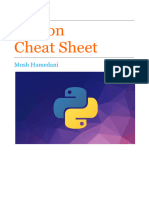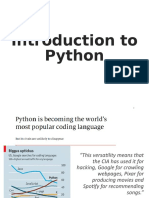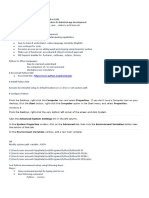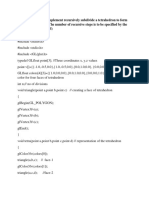0% found this document useful (0 votes)
36 views15 pagesIntro To Python Pro
Python is a high-level, interpreted programming language known for its simplicity and popularity, supporting object-oriented concepts and powerful scripting capabilities. Developed by Guido Van Rossum in the early 90s, Python has applications in web development, data analysis, machine learning, and game development. Its strengths include ease of learning, portability, extensive libraries, and database connectivity, while it also features various string functions and function types for programming tasks.
Uploaded by
kumaryaduvanshi582Copyright
© © All Rights Reserved
We take content rights seriously. If you suspect this is your content, claim it here.
Available Formats
Download as PPTX, PDF, TXT or read online on Scribd
0% found this document useful (0 votes)
36 views15 pagesIntro To Python Pro
Python is a high-level, interpreted programming language known for its simplicity and popularity, supporting object-oriented concepts and powerful scripting capabilities. Developed by Guido Van Rossum in the early 90s, Python has applications in web development, data analysis, machine learning, and game development. Its strengths include ease of learning, portability, extensive libraries, and database connectivity, while it also features various string functions and function types for programming tasks.
Uploaded by
kumaryaduvanshi582Copyright
© © All Rights Reserved
We take content rights seriously. If you suspect this is your content, claim it here.
Available Formats
Download as PPTX, PDF, TXT or read online on Scribd
/ 15


















































































